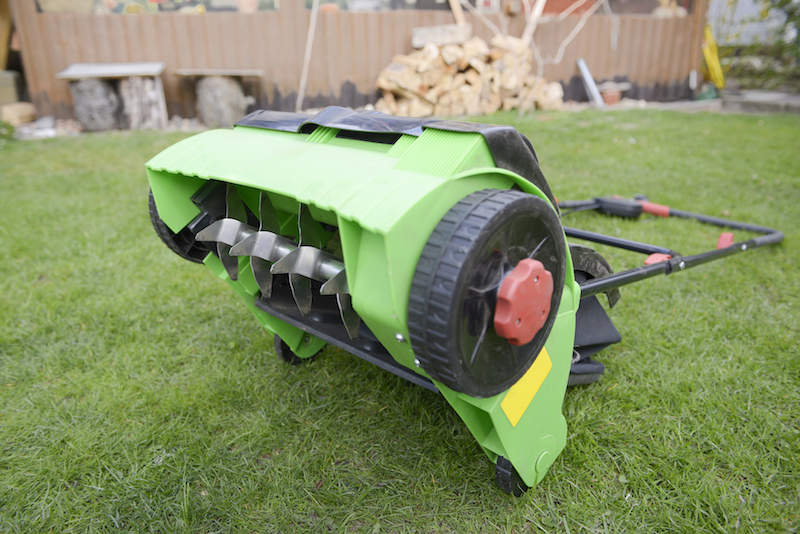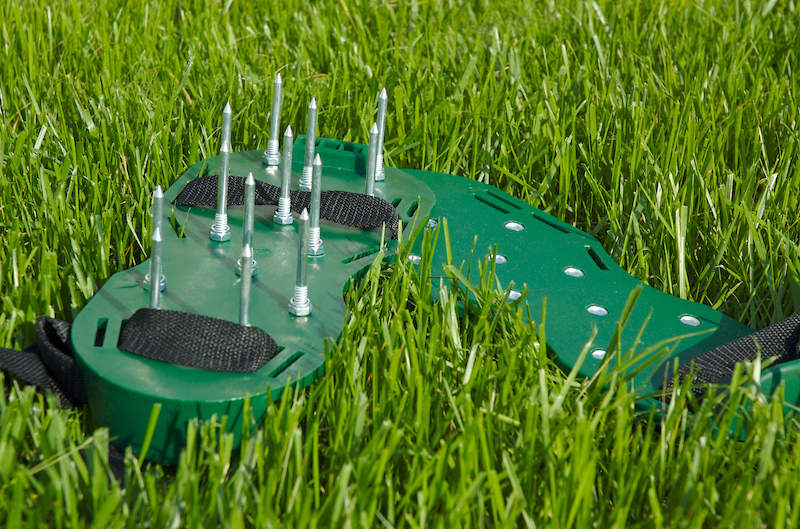Why, When and How to Aerate Your Lawn
Simple, regular maintenance tasks go a long way in creating a thicker, healthier lawn. But jobs typically reserved for once a year can play a significant role in supporting smaller steps taken across the months. For many homeowners, aerating lawns to relieve soil compaction and enhance grass growth is a regular annual task. Almost any lawn can benefit from aeration when it's timed well and done properly.
Why Aerating Helps Lawns
Grass roots need air, water and nutrients to grow thick, deep and strong. When soil becomes compacted, even slightly, it inhibit the flow of the essentials that support thicker, healthier turf growth. A layer of compacted soil just 1/4 to 1/2 inches thick can make a significant difference in the health and beauty of your lawn.1 Aeration creates holes down into the soil to alleviate compaction so air, water and nutrients can reach grass roots.
Deprived of their basic needs by compacted soil, lawn grasses struggle in stressful situations, such as heat and low rainfall, and lose their healthy, rich color. Grasses gradually thin and eventually die out completely, for lack of the oxygen, water and nutrients available just inches away. Even a single aeration session can open the avenue for these essentials to reach their mark and put your lawn back on an upward trend.

Core aerators pull small plugs of soil to the surface.
When Lawns Need Aeration
It may not seem your lawn could get compacted, but it happens easier than you may think. Vehicles or small equipment driven on lawns are more obvious offenders, but even outdoor entertaining or yard play by kids and pets can leave all or part of your lawn compacted. If you live where heavy clay soil is the norm, annual aeration is probably needed to keep your lawn from becoming thin and weak.
Dethatching and aerating are two different tasks, but they often go hand in hand. Thatch is the layer of decomposing organic matter that forms right at the lawn surface, between soil and grass. When thatch gets more than 1/2 inch thick, it works like compaction to prevent the flow of air, water and nutrients grasses need. Aggressive spreading grasses, such as Kentucky bluegrassin northern lawns and Bermudagrass down south, form more thatch than many other grass types. Aeration helps penetrate and reduce thatch buildup or prep it for removal through dethatching.
If your grass often looks stressed and your soil is hard to the touch or rainwater puddles up where it used to be absorbed, you may have compaction problems. Confirm your suspicions with a simple "screwdriver test." Take a regular screwdriver and stick it into your lawn's soil by hand. It should slide in fairly easily. If you meet resistance, your soil is compacted, and aeration can help.
When to Aerate Your Lawn
As with most larger lawn projects, such as planting grass seed, it's best to aerate during or right before the time your grasses reach their peak time for natural growth. Aeration is good for lawns, but it can stress grass if timed improperly. Never aerate dormant lawns.
For cool-season grasses common in northern lawns, early fall or early spring are the best times for aerating. For warm-season grasses common to southern lawns, the best time for aerating is late spring or very early summer. When aeration coincides with active growth, grasses recover quickly and fill in areas where aerator equipment exposes soil.
Aerating is easiest on you (or your equipment operator) and your lawn when your soil is moist from irrigation or rainfall the day before. Overly dry soil can be tough to aerate, so moisture eases the process. Never aerate overly wet lawns; wait a few days instead.

Slicing aerators slice through lawns and leave soil in place.
How to Aerate Your Lawn
Aerating equipment comes in three main types, from small manual versions to larger tractor-like or pull-behind machinery:
- Spike aerators simply poke a hole down into the soil with a solid, spike-like tine. Some homeowners wear spiked aerator “sandals" strapped to their shoes to aerate as they do yard work. While these can help on a small scale, spike machines can make compaction worse by pressing soil together around the holes.1
- Slicing aerators have rotating blades that cut or slice through grass and thatch and down into soil. Like spike aerators, slicing aerators leave soil in the ground, but they create pathways for air, water and nutrients without causing more compaction.
- Core or plug aerators, typically preferred by lawn professionals, use rows of hollow tines that remove plugs of soil from your lawn and deposit them on top, where they break down. The size of the plugs and the holes they create vary in width and depth, depending on the machine used.
You can hire a lawn service to aerate for you or do it yourself like a pro. Equipment rental companies and lawn and garden stores often rent aerator machines and provide basic operating instructions for the model you choose. Aerating is a lot like mowing as you work back and forth across your lawn. Concentrate on any known problem areas, like pet runs or backyard baseball diamonds. Make several passes in different directions to help ensure optimal coverage and benefits.

What to Do After Aeration
After you finish aerating your lawn, let soil plugs or extra soil dry where they fall. They'll break down in rain or crumble the next time you mow, adding beneficial soil and organic matter to your lawn surface.
Right after aeration is a perfect time to overseed with premium Pennington Smart Seed and fertilize your lawn or do simple lawn repairs. Seeds and nutrients have direct contact with soil through the openings your aerator created and roots have fresh pathways for the things they need. The combination can help put your lawn on the fast track for quick seed establishment and thicker, lusher growth.
By adding aeration to your annual task list or doing regular compaction tests to check for need, you help ensure your lawn can reach its full potential for thickness, health and beauty. Pennington is committed to providing you with the finest in grass seed and lawn care products to help you achieve your lawn goals.
Pennington and Smart Seed are trademarks of Pennington Seed, Inc.
Sources
- Harper, J. C., "Aeration of Turfgrass Areas," PennState Center for Turfgrass Science.

